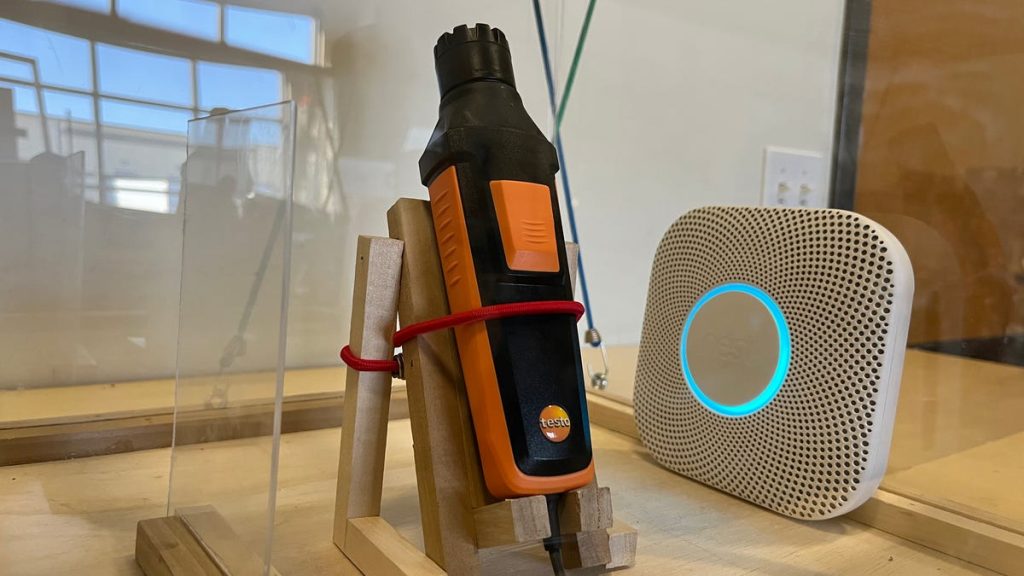In order to test the effectiveness of carbon monoxide detectors, the testers built a custom test rig designed to measure the response time of each unit to varying concentrations of carbon monoxide, specifically at 250 ppm and 400 ppm. The goal was to determine how well each detector detected potentially hazardous levels of carbon monoxide. Features such as user experience, performance, and cost-efficiency were also taken into account when declaring the winners of the test. It was emphasized that having carbon monoxide detectors installed on every floor of a home is crucial for safety.
The test rig included a carbon monoxide detector chamber made from wood, plexiglass, silicon, tape, and finish nails, as well as a carbon monoxide tank with a gas flow regulator containing carbon monoxide at 2,500 ppm and balance air. The rig also featured the Testo 300 with a carbon monoxide ambient sensor as a control device for the experiment, along with two portable carbon monoxide gas alarms. Safety precautions were put in place to ensure the well-being of the laboratory staff while conducting the dangerous test, including the use of respirator suits and adequate ventilation.
The chamber housed two carbon monoxide detectors: the CO ambient sensor from the Testo 300 and the unit under test (UUT), which represented each carbon monoxide detector being tested. The chamber was sealed with foam but not airtight, as the goal was not to create a carbon monoxide bomb. A gas flow regulator was installed on the tank to prevent pressure spikes, and a gas line was used to feed the gas mixture into the chamber. Additional portable carbon monoxide detectors were positioned to detect leaks and monitor carbon monoxide levels in the test station area, while the testers wore respirator suits for protection.
Once the gas mixture was fed into the chamber and the carbon monoxide concentration reached at least 250 ppm or 400 ppm, the testers stopped feeding the gas and started a timer to assess how long the carbon monoxide detectors took to react to the conditions. Safety protocols were followed to limit exposure while ensuring repeatable results. The interactive graph below summarized the results of the test, showing the response times of each carbon monoxide detector to varying concentrations of carbon monoxide. Overall, the importance of having reliable carbon monoxide detectors in the home to prevent potential hazards was highlighted in the test results.


